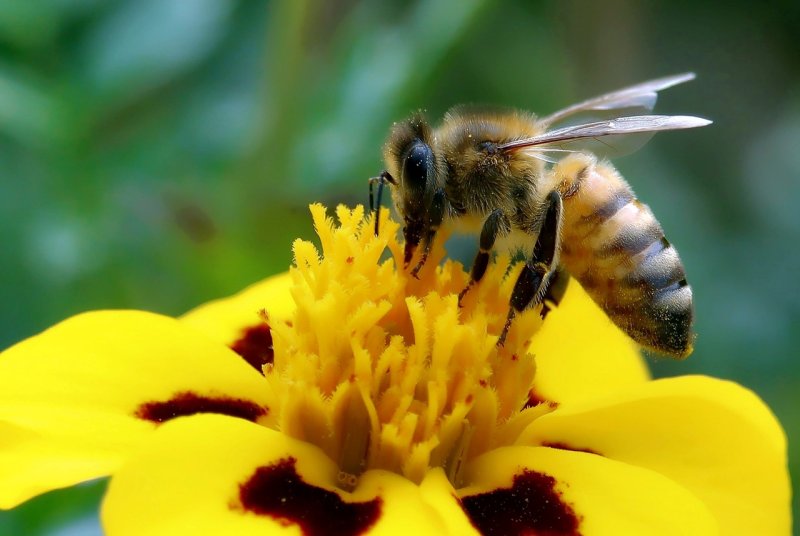Through a series of detailed observations and lab tests, scientists were able to explain how bee spit and flower oil combine to bind pollen to bee legs and protect it from the elements. Photo by
Lolame/Pixabay
March 28 (UPI) -- Bees have many talents. They're highly organized, adept flyers and excellent navigators. According to a new study, they're also masters of adhesion.
As bees collect tiny bits of pollen from flowers, they compact the powdery grains into bundles attached to their hind legs. But what keeps the balls of pollen from washing away in a rain storm?
According to scientists at the Georgia Institute of Technology, the combination of bee spit and flower oil ensure the pollen bundles remain firmly in place.
"A bee encounters not just wet and humid environments but windy and dry surroundings as well, so its pollen pellet must counteract those variations in humidity while remaining adhered," J. Carson Meredith, a professor of chemical and biomolecular engineering at Georgia Tech, said in a news release. "Being able to withstand those kinds of changes in humidity is still a challenge for synthetic adhesives."
Through a series of detailed observations and lab tests, scientists were able to explain how bee spit and flower oil combine to bind pollen to bee legs and protect it from the elements.
First, the bee's salivary glands produce a secretion that coats each pollen grain, causing them to bind together. Bees use sugar from the flower nectar they drink to produce the special saliva. The sticky saliva also helps the bundles adhere to the bees leg.
The second substance, the flower oil, or pollenkitt, protects the adhesive qualities of the saliva, ensuring it's stickiness isn't compromised by varying humidity levels.
"It works similarly to a layer of cooking oil covering a pool of syrup," Meredith said. "The oil separates the syrup from the air and slows down drying considerably."
In the lab, scientists separated the two components and studied how bee saliva, without the protection of pollenkitt, reacted to different humidity levels. The tests showed the nectar-based secretion absorbs more water as humidity levels rise, weakening the substance's adhesive qualities.
When they added pollenkitt back to the mix, the sticky saliva remained unaffected by changing humidity.
The researchers estimate the combination could be replicated to form new kinds of bio-inspired glues -- glues that are more resilient and less vulnerable to harsh environments and changing weather.
"We believe you could take the essential concepts of this material and develop a novel adhesive with a water-barrier external oil layer that could better resist humidity changes in the same way," Meredith said. "Or potentially this concept would apply to controlling the working time of an adhesive, such as its ability to flow and time to dry or cure."
Meredith and his colleagues published their analysis of bee spit and flower oil in the journal Nature Communications.















